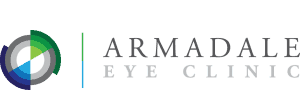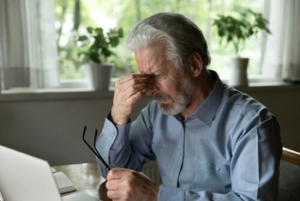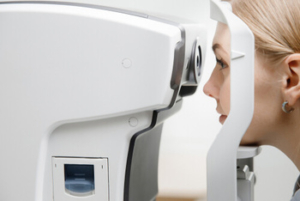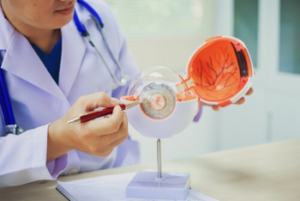Understanding Glaucoma and High Blood Pressure: What to Know
The relationship between glaucoma and high blood pressure is a subject of ongoing clinical interest. Both conditions involve the regulation of pressure and blood flow within sensitive body systems: the eyes and the cardiovascular network. Understanding how blood pressure influences the eyes can help you make informed decisions about monitoring and maintaining your vision health.
This article examines how glaucoma and high blood pressure interact, what risk factors may increase susceptibility, and how blood pressure management can contribute to maintaining healthy vision. It also provides information on diagnosis and treatment approaches.
Overview of Glaucoma
Glaucoma is a group of conditions involving damage to the optic nerve, which is responsible for sending information from the eye to the brain.
When this nerve suffers damage, vision can gradually decrease over time. This process is often linked to increased pressure inside the eye, known as intraocular pressure (IOP), but can also happen even when eye pressure appears normal.
 Overview of High Blood Pressure
Overview of High Blood Pressure
High blood pressure, also known as hypertension, happens when the force of blood pushing against the arteries’ walls remains elevated for a prolonged period. It can affect different organs, including the heart, kidneys, and eyes.
Long-term high blood pressure may alter blood flow to delicate tissues, including those in the eyes, influencing eye pressure and possibly contributing to optic nerve damage.
How Blood Pressure Affects Eye Pressure
Blood pressure and eye pressure share a complex relationship. Both affect the overall perfusion pressure of the optic nerve.
High blood pressure may lead to changes in the small blood vessels supplying the eye. In contrast, low blood pressure may reduce ocular perfusion pressure, affecting the optic nerve’s oxygen and nutrient supply.
The Role of the Optic Nerve in Eyesight
The optic nerve consists of nerve fibres. These fibres carry signals from the retina to the brain, where images are processed. Maintaining consistent blood flow and oxygen delivery to this nerve is crucial for preserving vision.
How Pressure Changes Can Lead to Optic Nerve Damage
When intraocular pressure becomes elevated, it can compress the optic nerve fibres and disrupt blood flow, which may lead to structural damage over time. Even in cases of normal tension glaucoma, where eye pressure is not raised, the optic nerve may still be affected if blood pressure is too low to maintain sufficient perfusion.
Intraocular Pressure and Its Importance
Normal eye pressure mostly ranges between 10 and 21 mmHg, but this can vary from person to person. Maintaining balanced pressure inside the eye is essential for proper function and structural stability.
What Happens When Eye Pressure Rises
Raised or elevated eye pressure, known as ocular hypertension, can occur when too much fluid builds up in the eye.
This fluid, called aqueous humour, is produced continuously and drains through a small system in the anterior chamber. If the drainage system does not function properly, pressure may increase, potentially threatening the optic nerve.
Types of Glaucoma and Their Relationship With Blood Pressure
Glaucoma can develop in several forms, each influenced by blood pressure and eye pressure regulation.
Primary Open Angle Glaucoma
This is one form of glaucoma that develops slowly when the eye’s drainage system becomes less efficient. Individuals with high intraocular pressure and elevated blood pressure may have a higher risk of having this condition.
Normal Tension Glaucoma
Normal tension glaucoma occurs when optic nerve damage develops despite eye pressure being within the normal range. In many cases, low blood pressure or low ocular perfusion pressure may contribute to reduced blood flow to the optic nerve.
Angle-Closure Glaucoma
This type may occur when the drainage angle between the iris and cornea becomes blocked, potentially causing a rapid rise in eye pressure. Sudden pressure changes can disrupt blood flow and place stress on the optic nerve, requiring prompt assessment and management.
The Role of Ocular Perfusion Pressure
Ocular perfusion pressure represents the difference between blood pressure and intraocular pressure. Adequate perfusion pressure ensures that oxygen and nutrients reach the optic nerve and surrounding tissues effectively.
Low Ocular Perfusion Pressure and Vision Health
When blood pressure is too low or intraocular pressure is too high, ocular perfusion pressure drops. Over time, this can compromise optic nerve function, especially in glaucoma patients or those with vascular health issues.
Understanding Perfusion Pressure in Glaucoma Patients
Both high blood pressure and low blood pressure can influence perfusion pressure. Stable systemic blood pressure supports consistent ocular perfusion, which is vital for individuals with glaucoma or ocular hypertension.
 Blood Pressure Levels and Eye Health
Blood Pressure Levels and Eye Health
High BP can affect the delicate blood vessels that nourish the eye. Over time, this may alter the balance of fluid production and drainage, influencing eye pressure.
Low blood pressure might result in insufficient blood flow to the optic nerve, especially during sleep. This condition may contribute to normal tension glaucoma.
Maintaining Balanced Blood Pressure Control
Balanced blood pressure control supports both general and eye health. Managing systemic pressure may help with the perfusion to the optic nerve and lower the likelihood of developing pressure-related eye problems.
Risk Factors for Glaucoma
Several factors can increase the likelihood of developing glaucoma. Understanding these helps support early detection and appropriate management strategies.
Family History of Glaucoma
A family history of glaucoma may increase the likelihood of developing the condition. Genetic factors can influence both eye structure and how the eye regulates fluid and pressure.
Extreme Short-Sightedness
Individuals with extreme short-sightedness, or myopia, may have structural eye changes that increase susceptibility to raised eye pressure.
Age and Other Medical Conditions
The risk of glaucoma increases with age. Other medical conditions, such as diabetes and heart disease, may further affect blood vessel health and eye pressure.
Heart Disease and Blood Vessel Health
Since glaucoma involves both pressure and blood flow, cardiovascular health plays a role. Proper blood vessel function may be associated with normal perfusion pressure and optic nerve health.
Recognising the Signs of Glaucoma
Glaucoma often progresses gradually, making early detection through regular eye exams essential.
While symptoms may not always be obvious, understanding the potential warning signs can help you stay proactive about your eye health.
Early Changes in Side Vision
Glaucoma often affects peripheral or side vision first. This gradual loss can go unnoticed until it becomes more advanced.
Subtle Symptoms That May Be Overlooked
Most glaucoma patients do not experience noticeable pain or discomfort. Regular eye exams help detect small changes in vision or pressure early.
Importance of Regular Eye Exams
Comprehensive eye exams allow an eye doctor to monitor intraocular pressure, optic nerve condition, and other risk factors. Early detection plays a key role in maintaining healthy vision.
Managing Glaucoma and High Blood Pressure
Blood flow to the optic nerve can be influenced by both glaucoma and high blood pressure. Management often involves addressing these conditions through medical assessment and monitoring to maintain stable eye pressure and consistent ocular perfusion.
Blood Pressure Control Strategies
Maintaining healthy blood pressure levels supports consistent ocular perfusion. Working with healthcare professionals helps identify appropriate management approaches.
Glaucoma Treatment Options
Glaucoma treatment focuses on lowering intraocular pressure to protect the optic nerve. Options include prescription eye drops, laser therapy, or surgery, depending on individual circumstances.
Frequently Asked Questions
 What is ocular hypertension?
What is ocular hypertension?
Ocular hypertension refers to consistently high intraocular pressure without visible damage to the optic nerve. If left untreated, this condition may progress to glaucoma. Regular monitoring by an eye doctor helps detect early signs of change in optic nerve health.
What is ocular perfusion pressure?
Ocular perfusion pressure is the balance between blood pressure and intraocular pressure. It represents how much blood reaches the optic nerve, ensuring oxygen and nutrients are delivered effectively.
How often should I have an eye exam if I have high BP?
People with high blood pressure are encouraged to have regular eye exams, typically every one to two years, or as recommended by their eye doctor.
Conclusion
Glaucoma and high blood pressure are interconnected conditions that share important physiological pathways involving blood flow and pressure regulation. Understanding their relationship helps in maintaining both systemic and ocular health.
Regular eye exams, consistent blood pressure monitoring, and professional guidance from qualified eye doctors should help identify and manage risk factors. Balanced care supports long-term eye health and visual function.
If you have concerns about your eye health or blood pressure, consider scheduling a comprehensive eye exam with Armadale Eye Clinic at (03) 9070 5753.
A professional assessment can help monitor intraocular pressure, evaluate the optic nerve, and discuss management options based on your individual needs.
Note: Any surgical or invasive procedure carries risks. Before proceeding, you should seek a second opinion from an appropriately qualified health practitioner.
References
Healthdirect Australia. (2024, May). Glaucoma. Healthdirect. Retrieved October 13, 2025, from https://www.healthdirect.gov.au/glaucoma
Moore, W. (2024, December 31). What Is Open-Angle Glaucoma? WebMD. Retrieved October 13, 2025, from https://www.webmd.com/eye-health/eye-open-angle-glaucoma
P Lin, A. (2025, March 27). Acute Angle-Closure Glaucoma (AACG). Medscape. Retrieved October 13, 2025, from https://emedicine.medscape.com/article/1206956-overview
Tee-Melegrito, R. A. (2023, May 18). What does glaucoma vision look like? Medical News Today. Retrieved October 13, 2025, from https://www.medicalnewstoday.com/articles/what-does-glaucoma-vision-look-like


 Overview of High Blood Pressure
Overview of High Blood Pressure Blood Pressure Levels and Eye Health
Blood Pressure Levels and Eye Health What is ocular hypertension?
What is ocular hypertension?




 If you’re only experiencing blurry vision in one eye, the underlying causes may be different and often more localised to that eye. These can include conditions like cataracts, refractive errors, glaucoma, or macular degeneration.
If you’re only experiencing blurry vision in one eye, the underlying causes may be different and often more localised to that eye. These can include conditions like cataracts, refractive errors, glaucoma, or macular degeneration.
 Sudden blurry vision in both eyes can be alarming, and it’s a sign that something needs your attention. While not every cause is dangerous, some can pose a serious threat to your vision and overall health.
Sudden blurry vision in both eyes can be alarming, and it’s a sign that something needs your attention. While not every cause is dangerous, some can pose a serious threat to your vision and overall health.


 Blurry vision in one eye can feel disorienting, but it doesn’t have to be alarming. The most important thing you can do is listen to your body, notice warning signs, and take action if something doesn’t feel right.
Blurry vision in one eye can feel disorienting, but it doesn’t have to be alarming. The most important thing you can do is listen to your body, notice warning signs, and take action if something doesn’t feel right.
 Originally used to treat your heart and blood vessels and manage things like chest pain and even stage fright, these medications work by blocking the effects of adrenaline on your body’s beta receptors, also called β-receptors. These tiny sites are found in the heart, blood vessels, lungs, and yes, even your eyes.
Originally used to treat your heart and blood vessels and manage things like chest pain and even stage fright, these medications work by blocking the effects of adrenaline on your body’s beta receptors, also called β-receptors. These tiny sites are found in the heart, blood vessels, lungs, and yes, even your eyes. Like all medications, beta blockers
Like all medications, beta blockers Whether you’re managing your IOP or seeking more information, it’s always best to speak with a qualified professional who can guide you with knowledge and care.
Whether you’re managing your IOP or seeking more information, it’s always best to speak with a qualified professional who can guide you with knowledge and care.
 ICL eye surgery is a type of refractive surgery that involves
ICL eye surgery is a type of refractive surgery that involves Here’s what you can expect:
Here’s what you can expect: Every eye is unique. The best way to know whether you’re a candidate for this advanced form of refractive surgery is to book an initial consultation with an experienced and appropriately qualified health practitioner.
Every eye is unique. The best way to know whether you’re a candidate for this advanced form of refractive surgery is to book an initial consultation with an experienced and appropriately qualified health practitioner.


 Deciding whether glaucoma surgery is right for you can feel overwhelming, and that’s perfectly okay. But by learning what happens before and after glaucoma surgery, you’re already on the path to making an informed, confident choice.
Deciding whether glaucoma surgery is right for you can feel overwhelming, and that’s perfectly okay. But by learning what happens before and after glaucoma surgery, you’re already on the path to making an informed, confident choice.
 Primary open-angle glaucoma is the most widely known form of the disease. It
Primary open-angle glaucoma is the most widely known form of the disease. It
 Although glaucoma cannot be reversed, early detection and appropriate management can help preserve vision and promote eye health. If you have concerns about glaucoma, scheduling regular eye exams and consulting with an eye doctor is the best step towards
Although glaucoma cannot be reversed, early detection and appropriate management can help preserve vision and promote eye health. If you have concerns about glaucoma, scheduling regular eye exams and consulting with an eye doctor is the best step towards
 The Role Of Eye Pressure
The Role Of Eye Pressure Changes In Peripheral Vision
Changes In Peripheral Vision

 People with ocular hypertension usually don’t feel anything. It’s called a “silent” condition because no obvious signs exist. That’s why it’s important to see the eye doctor.
People with ocular hypertension usually don’t feel anything. It’s called a “silent” condition because no obvious signs exist. That’s why it’s important to see the eye doctor. The goal is to lower the eye pressure and
The goal is to lower the eye pressure and Taking care of your eyes is important to
Taking care of your eyes is important to
 Unfortunately, as it stands, there is currently no definitive cure for glaucoma. However, it can be managed to prevent further damage and maintain quality of life.
Unfortunately, as it stands, there is currently no definitive cure for glaucoma. However, it can be managed to prevent further damage and maintain quality of life. For patients with open-angle glaucoma, minimally invasive glaucoma surgery (MIGS) offers a promising option.
For patients with open-angle glaucoma, minimally invasive glaucoma surgery (MIGS) offers a promising option.